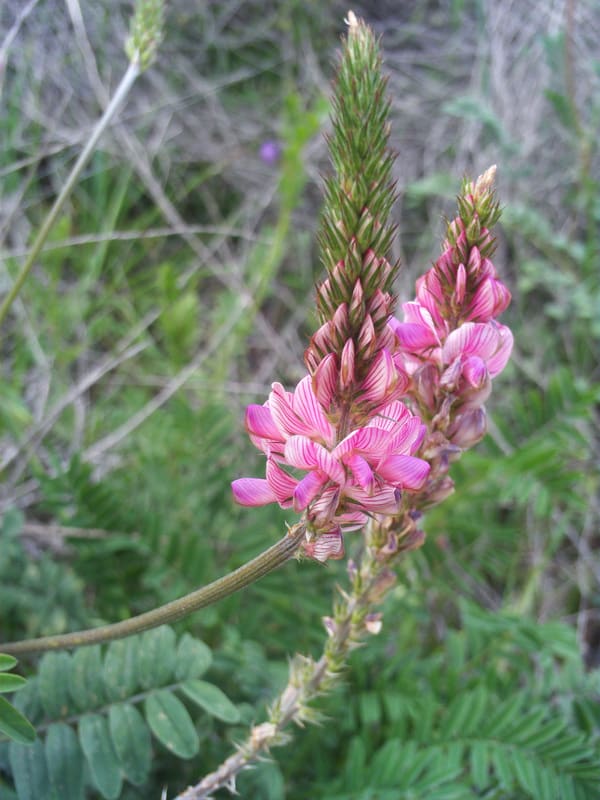Sainfoin, Common Sainfoin, Holy Clover, Esparcette cultivée
Onobrychis viciifolia

🌿 Morphology
🌞 Growing conditions
🌍 Origin and family
🌾 Uses
Warning: Despite the care taken in writing this sheet, it is essential to cross-reference sources before using or consuming any plant. When in doubt, consult a qualified professional
Permaculture uses
Sainfoin is primarily used as a forage crop for livestock, providing high-quality hay and pasture. It's a nitrogen-fixing legume, improving soil fertility and reducing the need for synthetic fertilizers. Its deep roots help break up compacted soils and improve drainage. The flowers attract pollinators, benefiting nearby crops. Sainfoin also has some medicinal applications, historically used for treating digestive ailments. Cultivars like 'Eski' and 'Melrose' have been bred for improved forage production and disease resistance.
Permapeople description
Onobrychis viciifolia, also known as sainfoin, is a perennial legume native to Europe and Asia. It is used as a forage crop and has a number of benefits for soil health and pollinators.
Botanical description
Onobrychis viciifolia, commonly known as Sainfoin, is a perennial herbaceous plant belonging to the Fabaceae family. It features pinnately compound leaves with numerous leaflets. The plant produces attractive spikes of pink or rose-colored flowers in the summer. The flowers are papilionaceous, typical of legumes. After flowering, it develops pods containing a single seed. It is a deep-rooted plant, capable of reaching significant depths in the soil. The stems are erect and can grow up to 0.5-1 meter tall. It prefers well-drained, alkaline soils and is drought-tolerant.
Companion planting
Favorable: Grasses (for pasture mixes), Cereals (as a break crop in rotation). Unfavorable: None particularly known, but avoid planting with other strong competitors for resources until established.
Propagation methods
Sainfoin is primarily propagated by seed. Seeds should be scarified before sowing to improve germination rates. It can also be propagated by root cuttings, although this method is less common. Direct sowing is the preferred method, typically in the spring or fall.
History and traditions
Sainfoin has been cultivated in Europe since the Middle Ages. Its name, 'Sainfoin', is derived from 'healthy hay' in French, reflecting its value as a nutritious livestock feed. Historically, it was widely grown as a break crop in cereal rotations to improve soil fertility. It has also been used in traditional medicine for its astringent and anti-inflammatory properties. In some cultures, it was believed to have protective qualities against evil spirits.
Usage calendar
Flowering: June-August. Sowing: Spring (March-May) or Fall (September-October). Harvesting (hay): Summer (July-August). Grazing: Spring-Fall. Pruning: After flowering to encourage regrowth.
